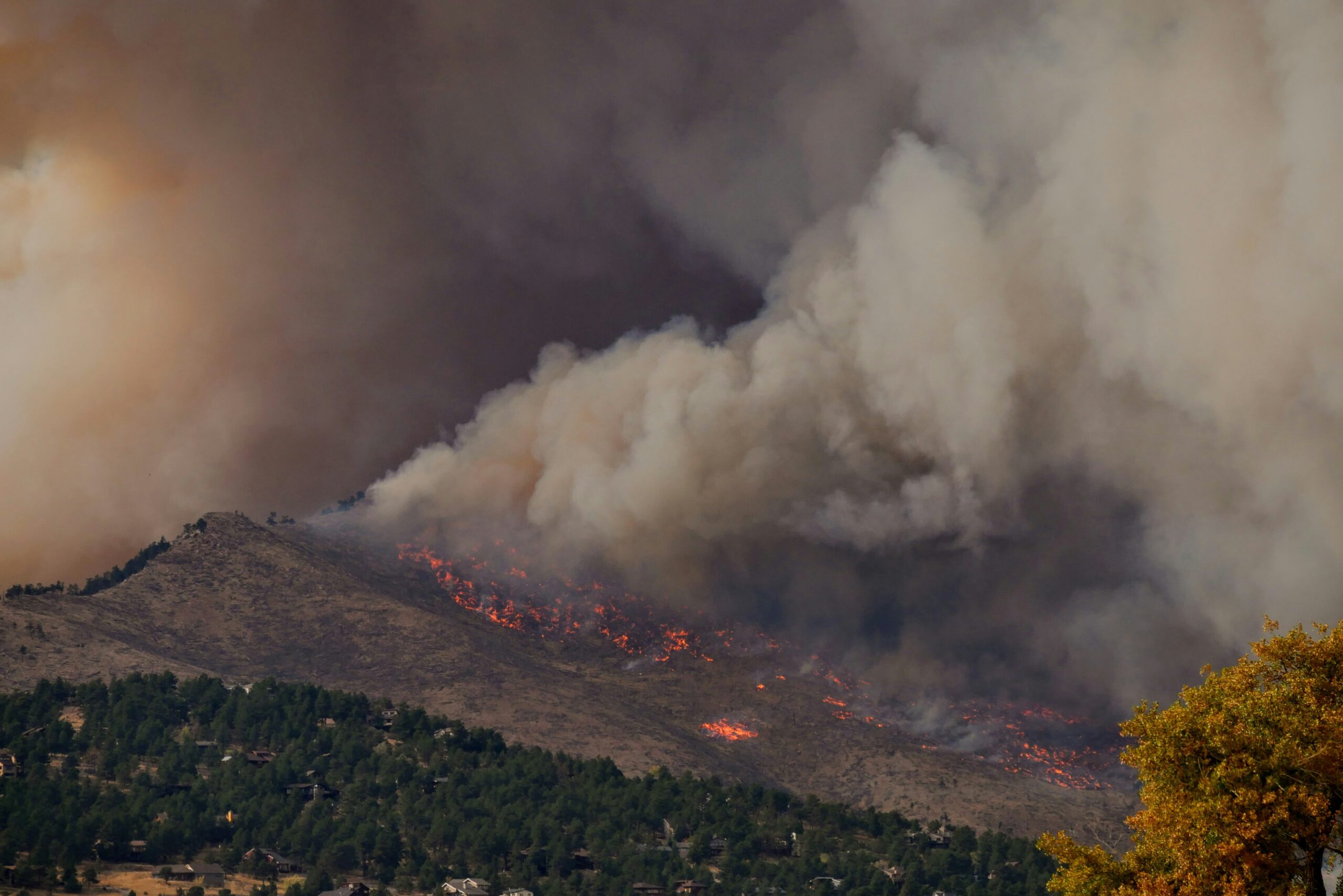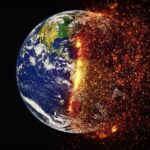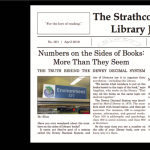What emerging journalists need to know about covering the climate crisis
Three young climate journalists say reporters who feel passionate about fighting the climate crisis should take comfort in knowing they are working within an established set of facts and don’t have to worry about providing both sides of the issue. Because there aren’t two sides.
In past decades, journalists have been discouraged from identifying climate change as a systemic issue underlying major weather events to avoid “taking a stance” on the matter. Even with solid scientific consensus on the causes of climate change, reporters on all beats are still somewhat timid about mentioning it. But amidst rising rates of climate anxiety among young people in Canada, a new generation of reporters are facing the unique challenge of covering a crisis that will impact them disproportionately.
To reporter Natasha Bulowski, emerging journalists shouldn’t necessarily shy away from personal feelings about the climate crisis while they cover its effects. In her work, Bulowski carefully balances covering federal policy and climate change events, which are often emotional and tend to be clouded by misinformation.
“When there’s a problem of this magnitude that is really threatening everyone, and you’re feeling very strongly about wanting a better world to live in in the future and your reporting is playing a role in that – I don’t think that’s a bad thing as long as you stay grounded in the scientific facts,” she said.
Bulowski, 26, reports on federal policy focusing on energy and climate change for Canada’s National Observer. “We’re all stakeholders in this world because we all have to live in it,” she added.
Adding a reporter’s personal relationship to the crisis can add depth to their stories, said Pippa Norman, 22, a reporter at CityNews Vancouver and editor at The Tyee. For instance, Norman thinks that Cabin Radio’s coverage of the Northwest Territories’ 2023 wildfire season demonstrates how a community-based approach to reporting, where journalists were at once witnesses and hostages to the fires, can lead to powerful and grounded reporting.
Reporting from a place of understanding how the climate crisis affects us all is not necessarily about writing every article in the first person. Instead, prioritizing the lived experiences of individuals and communities, which is what Cabin Radio journalists did during the fires, makes for better reporting and frees journalists to advocate for communities impacted.
At the Observer, Matteo Cimellaro, a Cree/settler journalist, files his stories from a standpoint of trying to understand how climate events and policies affect urban Indigenous communities in the Ottawa area. Reporters like Cimellaro, Bulowski and Norman may be more attuned to the impacts of climate events because they personally relate to how their generation is impacted by the crisis.
“This is another example of where being a part of something could make the story that much better,” said Norman.
Cimellaro said his reporting provides an outlet for him to work through his personal feelings about the crisis.
“I think grappling with the climate crisis through journalism is just another way to make sense and parse through how to approach it. Without (journalism), it’s so easy to get into climate anxiety or despair,” he said.
The view from somewhere: scientific consensus as your starting point
Aside from foregrounding lived experiences in their reporting, Norman thinks that, in a media landscape where climate stories are often isolated from other extreme global events, emerging journalists should be encouraged and taught how to connect the daily effects of the crisis we are all experiencing to one of its largest underlying causes: the continued burning of fossil fuels.
Sarah Everts, a science journalist with over 20 years of experience, said journalists have not always approached covering climate change from a standpoint of accepting the scientific consensus on man-made climate change.
In the past, they have felt compelled to find sources to speak on “the other side” of the consensus — people who have continued to question the relationship between burning fossil fuels and climate change despite overwhelming evidence, or who deny its existence altogether. This has resulted in false equivalences.
The scientific consensus, however, has been very well established for a while now. One recent review of over 11,000 peer-reviewed articles found a 100 per cent consensus rate on anthropogenic global warming.
Everts, who is now CTV Chair in Digital Science Journalism and associate professor at Carleton University’s School of Journalism and Communication, said reporters have traditionally treated the science of climate change as a debate between “two sides,” similar to when reporting on politics.
“That has unfortunately led to decades of misinformation,” she added.
Bulowski, Norman and Cimellaro think that journalists should feel comfortable reporting from a place of assuming, confidently, that the science on climate change is well established. There is no need to provide a false sense of balance by trying to include climate denialism, for example, in any story.
“Instead, I focus more on making sure those established facts are included,” said Bulowski.
When covering climate-related breaking news, Norman says she bookmarks resources that help her keep those facts at hand, such as the World Weather Attribution initiative, where a group of climate scientists highlight the causes of extreme weather events.
In practice, when dealing with a categorically wrong statement about the climate crisis that must be included in a story, such when a politician makes a false claim, Bulowski said sandwiching scientific context around the statement can be a helpful strategy.
“It takes a lot of words sometimes to put that context around it, but it is always worth doing,” she said.
Climate journalists have resources available to help with their reporting, such as scientific evidence syntheses and the Global Commission on Evidence to Address Societal Challenges.
Incorporating Indigenous knowledges in your reporting can provide invaluable societal context
For Indigenous investigative journalist Brandi Morin, conventional objectivity is not an option when covering the climate crisis. “These constructs of being completely removed and semi-robotic when covering stories of people and events were invented by mainly white men in this industry,” she said.
Morin is a Cree, Iroquois and French journalist specializing in investigative human rights and environmental reporting. In her documentary Killer Water, she exposes the toxic legacy of the Alberta oil sands on the Fort Chipewyan Indigenous community.
“I think that because all of humanity is affected by this threat, we are not going to have a choice but to have opinions, to be impacted,” Morin said.
When reflecting on the experience of covering the Nation of Skwlāx te Secwepemcúl̓ecw, which was ravished by wildfires this past August, Cimellaro said he had no choice but to embrace his emotions as the journalist.
“There’s no way you can’t use your emotions in that reporting, right? – Sitting with somebody who’s in tears because they lost their house, and so many memories and so many sacred possessions like medicines, and a drum and a pipe – You can’t not be emotional. I think emotions are essential,” he said.
Shortening that distance between reporters and climate stories means tapping into local knowledge. Morin said Indigenous peoples’ ancestral experiences are powerful and they are particularly aware of how land is changing as the impacts of climate change become more obvious.
“I would encourage journalists to take (Indigenous peoples’ knowledge) with just as much validity as scientists’ and other experts who are studying, researching and providing these facts about climate change,” she said.
Bulowski agrees. During her time in the industry, she has consciously provided space for traditional knowledge in her reporting.
“It’s just providing so much important context for the issues we’re facing right now,” she said.
For her part, Norman said she keeps a “sourcing help” folder of databases featuring diverse sources, which often comes in handy when covering breaking news, especially at publications that already have their go-to experts who are traditionally not Indigenous or not aware of Indigenous traditional knowledge.
“In fast-paced newsrooms, there’s a guy, and that guy is the guy that you go to for all of your wildfire questions, and everybody uses the same guy,” said Norman. “That person might not be a person of colour. They might not be Indigenous. And so, then you’re losing that perspective in a few different ways.”
Climate reporting is connected to all reporting
Mike De Souza is the managing editor at The Narwhal and has worked in environmental investigative journalism for many years. He said the industry can benefit from recognizing that the climate crisis affects all aspects of society, from immigration to war.
“In the past, (climate change) was siloed from other coverage and other types of news stories. There are many news stories that we can pursue through a climate change lens,” De Souza said.
In a newsroom, making this connection in stories related to the climate crisis can be as simple as adding a few contextual sentences, said Norman.
“Having that sentence or two about how this is connected to climate change will make all the difference in people realizing how these extreme weather events and the things happening in our world right now are really integrated,” she said.
Norman emphasized that emerging journalists should not view climate coverage as an intimidating, separate beat but instead think about how it may be connected to their existing areas of interest.
“It doesn’t have to be difficult. And it’s also everyone’s responsibility. It’s not just the person who got assigned the climate reporter job. It can be in everyone’s beat, and it is to everyone’s benefit if it is,” said Norman.





